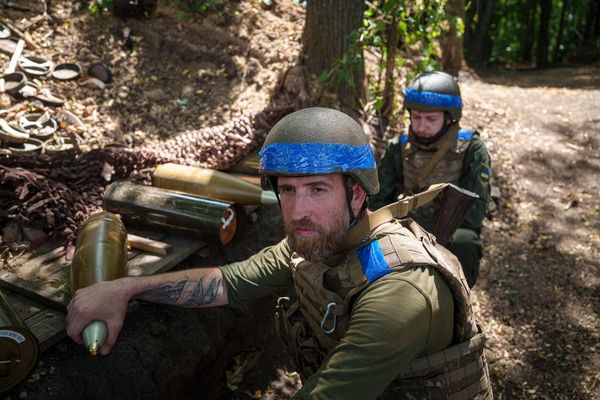
After five months spent searching for a Melbourne rental, Miranda Templeman stumbled upon an online listing she thought was too good to be true. There was a whole block of brand new apartments in the inner-city suburb of Kensington, each offering three-year leases that were much cheaper than other properties in the area.
“I honestly wasn’t sure if it was a scam or not,” she said. “But we figured we had nothing to lose and we put ourselves down for as many spots as we could. When we got the call that we had been selected for one it was a massive relief.”
Templeman is one of the first tenants of an Australian-first affordable rental scheme on offer by the Victorian government. Under the plan, about 2,400 homes from the government’s $5.3bn “big housing build” will become available to rent for low- to middle-income earners by July 2027.
Rents at these properties will be set at least 10% below the median market rent of the area, capped at 30% of the median income.
Despite securing a contract as a goalkeeper for A-League club Melbourne Victory, Templeman said she and her partner – a second-year engineering apprentice – would have struggled to find a rental property they could afford.
“Unfortunately, there’s not as much money in the female side of sport so we didn’t have a huge budget and not a lot of rental experience as we had both mainly lived with our parents on the other side of the country [in Perth],” she said.

University student Julia Liddell, 23, and her partner were similarly struggling to find a place to live when she found the listing for the affordable rental scheme. She said rent on their apartment in Camberwell had gone up by $300 a month, despite having a broken dishwasher, damaged carpets and no heating or cooling.
“If we wanted to find a nicer place that met basic living standards, we were seriously having to contemplate cutting back our budget for food and other necessities,” she said. “We were getting to that point where we were running out of savings. It was very scary.”
She said she had cried “tears of relief” when they were accepted for the Kensington affordable rental, knowing they wouldn’t have to move for three years.
Tenants began moving into the Kensington apartment block in April, while more than 150 affordable properties in Ascot Vale and Ashburton will become available in the coming months.
The program will also roll out in Victorian regional centres.
The homes are being be allocated by ballot rather than a needs-based assessment, which has been criticised by advocates, who fear those most in need may miss out.
The housing minister, Colin Brooks, acknowledged it was an “incredibly tough” time for Victorians and said this scheme was particularly tailored to those on a low to moderate income to provide a sense of security and safety.
“Especially for young people, it’s a vicious cycle trying to save for a house while at the same time paying really high rent – it’s almost impossible,” Brooks said.
“So giving people that little bit of breathing space to put a few dollars away, complete their studies and then hopefully they’re in position to get a promotion at work and then maybe move on.”

Brooks said the government was looking at ways to ensure essential workers and older Victorians had access to the scheme.
To be eligible for the affordable housing in Melbourne, applicants must be earning under $64,020 for a single person, $96,030 for a couple, or $134,450 for a family. Income thresholds are lower in regional Victoria.
Homes Victoria has engaged the tech company Snug to create a purpose-built platform to take applications for the program.
Last year a Guardian Australia investigation revealed Snug’s opaque and potentially discriminatory use of applicants’ personal data to “score” them against properties, giving them a higher score when they offered to pay more rent.
Brooks maintained the ballot process was designed after consultation to take out any bias in the process.
“We see it as the fairest way of choosing people for these wonderful homes,” he said.







